
Stature is a concept everyone understands. Any human being 6.5 feet tall gets attention-just for being heads and shoulders above the rest of us. A physical presence makes an unmistakeable impression. Alan Armitage has made a life’s work of studying plants. His shoulders-a whole body of work about what plants work, and what plants a gardener might consider passing by. His head-he writes and speaks intelligently and passionately about that human activity close to those shoulders-gardening. You may agree or not with him, but he has stature such that any serious gardener would give pause, and consider what he has to say.
Anyone of stature has the power to give pause. That the modern world is geared towards everything running at top speed, anything that slows me down has stature. True stature has to do with size, persistence, experience, and longevity. Trees do a good job of filling that bill. They are very large plants. I have read that the standing weight of a 26″ diameter hardwood is 4.2 tons; a mature oak tree will have close to a quarter million leaves. Some trees live a thousand years. Others grow to towering heights. Some grow in wild places never having had any care, and endure.
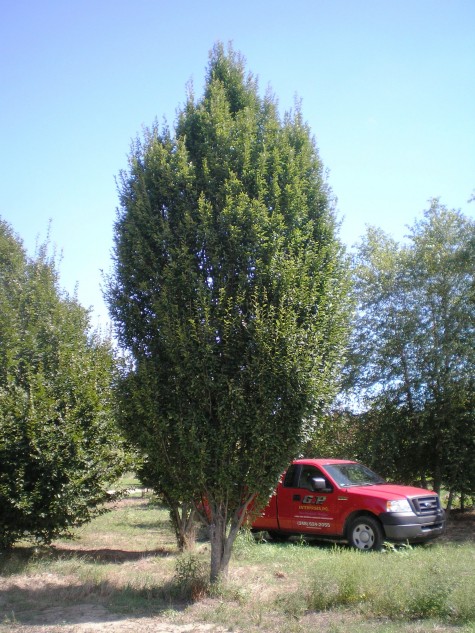
This columnar beech is almost 30 feet tall, and has been growing at a tree farm a good many years. GP Enterprises sells and transplants big trees. This is a very specialized part of the landscape industry, as the cost of the equipment which which moves those trees safely and successfully is astronomical to buy, operate and maintain. Not everyone needs a tree of great size, but sometimes the stature they confer on a landscape makes a lot of other work unnecessary. What a person might spend on shrubs or perennials over the years can come to a lot more than the cost of one large tree. 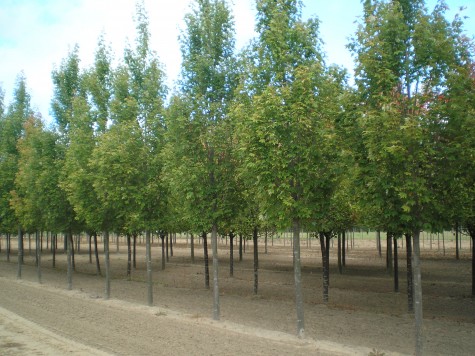
Any tree has stature potential; small trees are reasonable to purchase and take hold much faster than a specimen sized tree. That said, the most difficult part of adding young trees to a landscape is the placement. No one wants the expense of taking down a very large tree planted too close to their house, or their sidewalk. A properly placed large growing shade tree can look lonely before it grows into its own. These 4 inch caliper Bowhall maples pictured above will eventually tower over the ground plane. Planted at the corners of a 12 by 12 or 15 by 15 foot space, you will have a maple tent in not so many years. Plant 8 or 12 trees, a pergola big enough to entertain in. You can see the potential for a landscape feature with stature in this picture.
Columnar carpinus has a natural growth habit that reminds me of an egg with a softly rounded top. Columnar trees do not co-opt all the available sun, and they do a great job of screening out an untoward view. Maturing at 40 feet tall, and 30 feet wide, they have an elegant form that appeals to me.
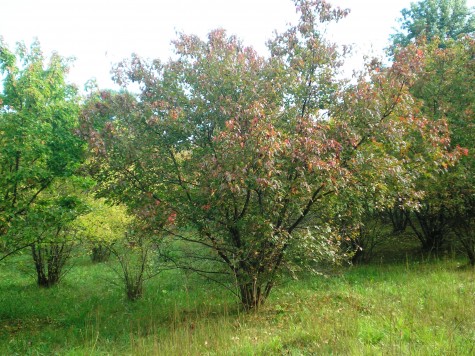 This older multi-trunked Amur maple has an entirely different look than the carpinus. The carpinus I would call architectural, and imposing-the Amur maple is graceful and lovely. This insouciant amur maple meadow is as visually successful as a formal landscape-just different. The choice of a tree or trees can influence the atmosphere of a space.
This older multi-trunked Amur maple has an entirely different look than the carpinus. The carpinus I would call architectural, and imposing-the Amur maple is graceful and lovely. This insouciant amur maple meadow is as visually successful as a formal landscape-just different. The choice of a tree or trees can influence the atmosphere of a space.
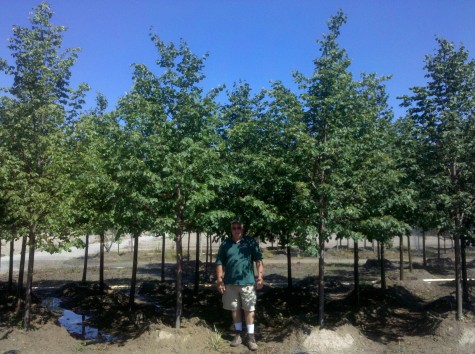
Ralph Plummer owns GP Enterprises, and though he landscapes, builds retaining walls, engineers drainage and grading, he has made a life’s work of moving and planting big trees. Even if he were not 6′ 6″ tall, he would still be a person of great stature.
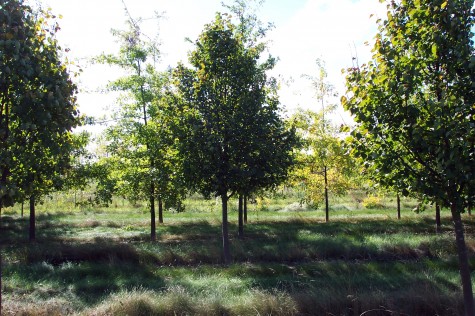
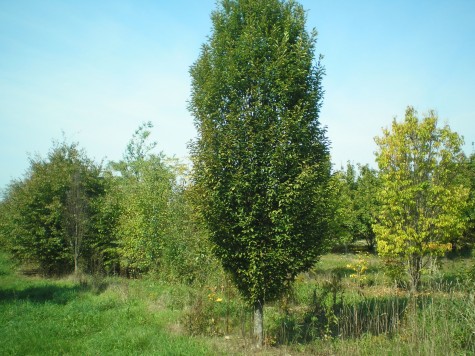
Leave a Comment